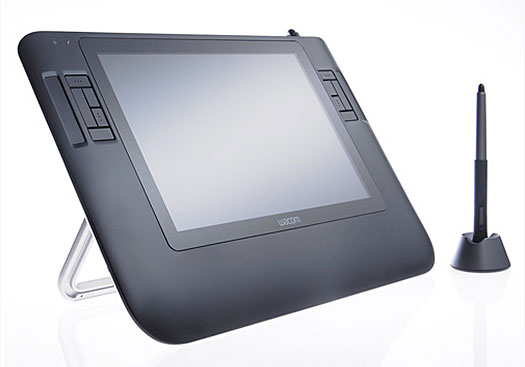Interactive Multimedia in the Classroom
Definition of Interactive Multimedia
Interactive multimedia is a two way interaction with multimedia course material or other computers or users, involving direct responses as opposed to one-way communications from TV, video, or other non-responsive media. Interactive attributes commonly include data or text entry, mouse input, touch screens, voice commands, video capture, and real-time interaction.
A Few Reasons to Use Multimedia in Education
- It facilitates student-centered learning allowing choice in the pathways for learning and the rate at which new material is introduced.
- It can address several learning styles and modalities -- providing a rich variety of instructional approaches which can teach in most of the ways that students learn best.
- It motivates student interaction, experimentation, and cooperative learning.
- Students often work together on computer projects as they never did on paper-and-pencil projects.
- It promotes the "constructivist" view of learning.
Research
According to Shen, Wang, and Pan (year), Interactive multimedia enable, "teachers and students to fully engage in the process of learning through frequent interaction and collaboration"(p.1075)
Studies have shown that using multimedia in the classroom increases students' test scores when compared to the same course taught without using multimedia. (Shen, Wang, & Pan, 2008 )(Frear & Hirschbuhl, 1999 )
Examples of Multimedia
3DProjection

3D projection has a capacity to enhance visualization. That could prove useful in classes such as geometry, in which the third dimension could illustrate complex spatial concepts, and biology, where 3D could be used for frog dissections or to show images of cells. Subjects such as astronomy, history, geography, art history, and earth sciences would be enriched as well.
Interactive Whiteboards

http://www.youtube.com/watch?v=0U05WeXPGlk
Interactive whiteboards can be used instead of the traditional whiteboards or the flipchart. They allow the teacher to present anything that is on their computer's desktop (educational software, web sites, and others). They also allow teachers to record their instruction and post the material for review by students at a later time. The possibilities are endless.
VoiceThread

VoiceThread allows you to talk about and share your images, documents, and videos.
Computer Simulations

A computer simulation attempts to simulate an abstract model.
PowerPoint and Hyperlinks

PowerPoint supports hyperlinks and sound features that can be incorporated to construct an interactive multimedia presentation.
Podium Interactive Pen Displays

Interactive pen displays are perfect presentation tools. You can bring your presentations to life. Interactive pen displays engage your audience by using the pen display to operate your computer, interact with your digital content and make notes everyone can see, all from the front of the room.
Interactive Learning Center


http://www.youtube.com/user/SMARTClassrooms
Young students are drawn to the surface of the interactive learning center, where work and play come together. The SMART Table is an interactive learning center
that allows groups of early education students to work simultaneously on one surface.
Interactive Response Systems

The interactive response system gives you the ability to instantly track quiz results and lesson comprehension to gain immediate insight into student learning and help increase overall retention and engagement.
Wireless Slate

http://www.youtube.com/watch?v=klWoIHGMc9g
The wireless slate gives you and your students the freedom to interact with digital content from anywhere in the room. As you use the pen to write on the surface of the wireless slate, your handwriting displays on both your computer screen and the SMART Board interactive whiteboard or a projection screen for all to see.
Elmo Document Camera

http://www.youtube.com/watch?v=DIfxPLHI2Eg

Turn any presentation into an exciting event. The ELMO bring images into vivid detail. Whether you need to capture live images or zoom in on still images with fine detail, ELMO has a presenter that will leave a lasting impression on your audience.
References
Frear, V., & Hirschbuhl, J. (1999). Does interactive multimedia promote achievement and
higher level thinking skills for today's science students?. British Journal of
Educational Technology, 30(4),323.
Shen, R., Wang, M., & Pan, X. (2008). Increasing interactivity in blended classrooms
through a cutting-edge mobile learning system. British Journal of Educational
Technology, 39(6), 1073-1086. doi:10.1111/j.1467-8535.2007.00778.x.
Comments (0)
You don't have permission to comment on this page.